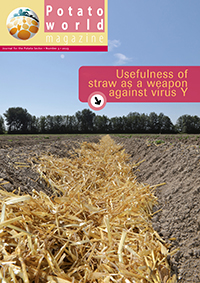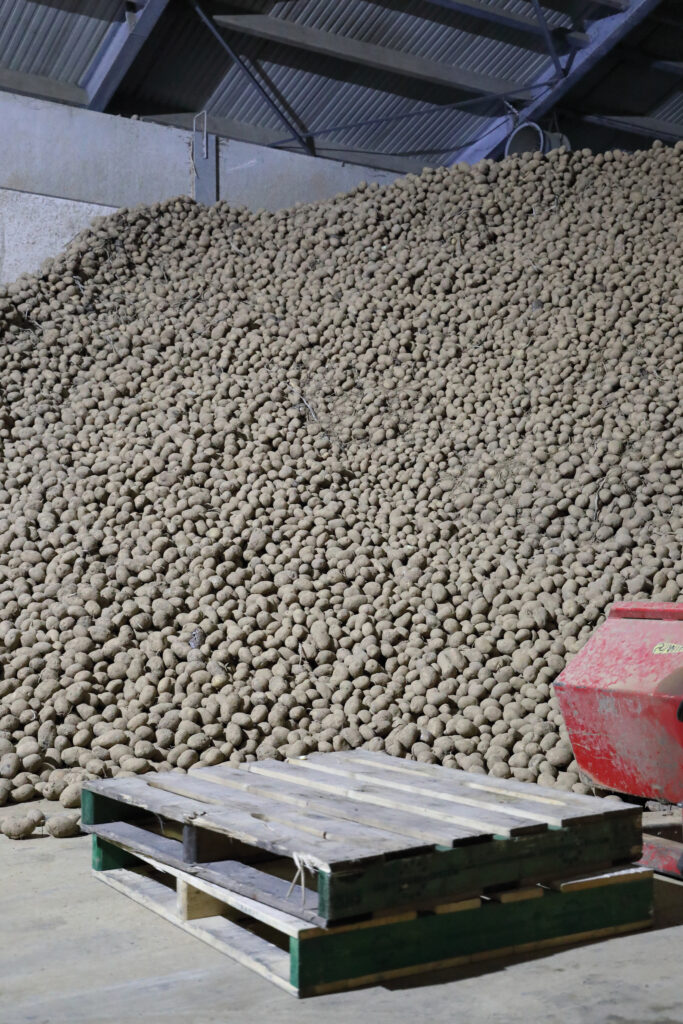Already a subscriber? Activate your premium account

Potatoworld Magazine

Last month I was on a holiday in Scotland and there I had a meal in a local pub. With the meal I had homemade French Fries, large and with a skin. Normally I like Fries this way especially when the are prepared in a proper way. However these fries were dark brown and had a very sweet taste. Potato specialists would say too much reducing sugars in the potato and that the brown color was caused by the maillard reaction during the frying process. In this reaction reducing sugars an amino acids react an give the fries a brown color and a sweet taste. Not only the taste is off, also acrylamide is formed which is known as carcinogenic so not really good for your health. The high level of reducing sugars can have a lot of reasons but in my experience it is often the result of bad storage, the potatoes have been too old or too cold. When I asked the waiter how the potatoes were stored, he told me that they were stored in the refrigerator, so in this case to cold.
Although it seems relatively easy to serve a good meal of fries, without the proper knowledge it is harder then you think. Over the last 50 years a lot of research has been done which enables us to serve a proper meal of fries with acrylamide levels as low as possible and this research is still going on. This year already several papers about acryl amide and potatoes were published. Because every step of the chain can be of influence, this research covers the whole supply chain for French Fries.
To lower acryl amide levels you have to start with a good variety. Research has shown that there is a wide variation of reducing sugar levels between varieties. Research from the US (Bethke, 2018) showed that “dramatic reductions in acrylamide are achievable through the use of new varieties that maintain low concentrations of tuber reducing sugars”. However in the industry old varieties up to 120 years are still used. A lot of them can have relatively high reducing sugar levels.

During cultivation of the potato crop, it seems that acrylamide in fried potato products can be minimized by using low reducing sugar cultivars supplied with a N fertilizer rate that optimizes yield and quality during growing seasons with minimal environmental stress. (Sun, Rosen, & Thompson, 2018) This means that you have to find good growers and good growing conditions to assure yourself of low amount of reducing sugars.
Storage always had the biggest influence, already in the eighties and nineties of the last century a lot of research was done on the relation between storage and the amount of reducing sugars in fried potato products. The main conclusions from this research that some varieties developed more sugars than others during storage, that (too) low temperatures temperature led to so called :cold sweetening” and that long storage led to so called “senescence sweeting”.
Finally when your frying the product high temperatures also increase the amount of acrylamides in your product.
So for the Scottish pub owner, it is nice to serve homemade fries and it looks very original, but I would advise him for his health and the health of his customers to learn more about potatoes and frying or just by a box of deep frozen fries, where the quality is assured.
Dr. Ir. Peter Kooman
Professor Potato supply chain and sector innovation
CAH Vilentum University of Applied Sciences
p.kooman@cahvilentum.nl
Bethke, P. C. (2018). Progress and Successes of the Specialty Crop Research Initiative on Acrylamide Reduction in Processed Potato Products. American Journal of Potato Research. doi:10.1007/s12230-018-9660-2
Sun, N., Rosen, C. J., & Thompson, A. L. (2018). Acrylamide Formation in Processed Potatoes as Affected by Cultivar, Nitrogen Fertilization and Storage Time. American Journal of Potato Research, 1-14.
Bethke, P. C. (2018). Progress and Successes of the Specialty Crop Research Initiative on Acrylamide Reduction in Processed Potato Products. American Journal of Potato Research. doi:10.1007/s12230-018-9660-2
Events
©2015 - 2024 Potatoworld | Webdesign and realisation COMMPRO